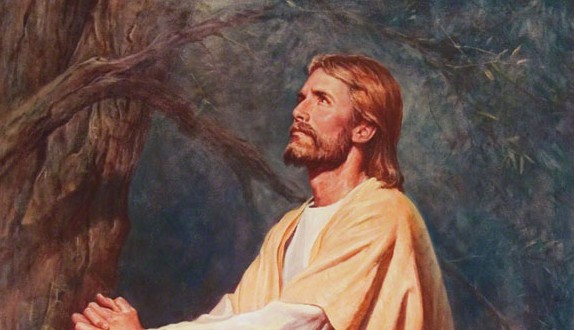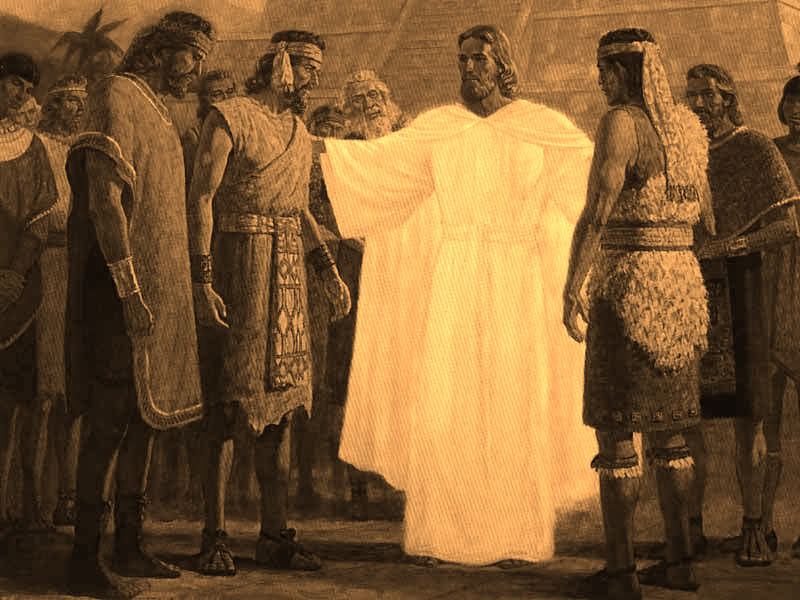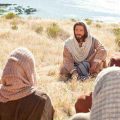Question
Gramps,
If the atonement is mainly carried out in the garden please explain what cup Jesus says he must drink in john 18:11.
Frank
Answer
Frank,
In John 18:11 Jesus reprimands Peter, who had just used his sword to cut off the ear of Malchus, the high priest’s servant. In the passage we read:
Then said Jesus unto Peter, Put up thy sword into the sheath: the cup which my Father hath given me, shall I not drink it?
The cup of which Christ speaks refers to the culmination of the trials and responsibilities he must endure in fulfilling His role as the Savior and Redeemer of the world. This is not the only time Christ spoke of the cup he had to bear. Shortly after His Ascension, Christ appeared to His followers in the America’s and also referenced the cup from which He drank.
And it came to pass that he stretched forth his hand and spake unto the people, saying:
Behold, I am Jesus Christ, whom the prophets testified shall come into the world.
And behold, I am the light and the life of the world; and I have drunk out of that bitter cup which the Father hath given me, and have glorified the Father in taking upon me the sins of the world, in the which I have suffered the will of the Father in all things from the beginning. (3 Ne. 11:9-11)
One of the amazing things about this passage, is that in this instance Christ speaks of the cup using past tense, as something that was completed, while in John, He is speaking in the present tense! This is important because it verifies that Christ indeed completed His responsibilities in regards to the fulfillment of His Atonement, while in John, His use of the present tense reminds us that at that time He was still in process of ‘drinking from the cup’.
In the theology of the Restored Gospel, we teach that the Atonement of Christ is comprised of three key parts; without each of these key parts, the entirety of Christs sacrifice would have been null and void.
The first of the key parts is Christ’s suffering in the Garden of Gethsemane. In your question you mentioned that Christ’s Atonement was ‘mainly carried out in the garden’; this interpretation of Restored theology is technically inaccurate, but is a common misconception, originating from two places.
In the first place, most Christian denominations place very little, if any, focus on Christ’s suffering in the garden, and rightly so. Without the restored truth’s found in the teachings of the Church of Jesus Christ of Latter-Day Saints, the only Biblical passage referencing Christ’s suffering in the Garden leaves much to be desired!
Saying, Father, if thou be willing, remove this cup from me: nevertheless not my will, but thine, be done.
And there appeared an angel unto him from heaven, strengthening him.
And being in an agony he prayed more earnestly: and his sweat was as it were great drops of blood falling down to the ground. (Luke 22:42-44)
From Luke’s witness, we know that Christ was strengthened by an angel from heaven, and that He was in agony while praying. We also know that the agony was so intense that He was sweating, and that His sweat was like great drops of blood. Sweating blood is a medical condition known as hematohydrosis or hematidrosis; it’s exact cause is unknown, but one cause is, “extreme distress or fear, such as facing death, torture, or severe ongoing abuse.” Through the teachings of the Restored Gospel, we would see this level of suffering as an accurate starting point to describe what Christ suffered. One ancient American prophet from the Book of Mormon, Alma, spoke of Christ’s suffering with the following words:
And he shall go forth, suffering pains and afflictions and temptations of every kind; and this that the word might be fulfilled which saith he will take upon him the pains and the sicknesses of his people.
And he will take upon him death, that he may loose the bands of death which bind his people; and he will take upon him their infirmities, that his bowels may be filled with mercy, according to the flesh, that he may know according to the flesh how to succor his people according to their infirmities. (Alma 7:11-12)
In The Church of Jesus Christ of Latter-day Saints we teach that Christ suffered the entirety of human experience while in the Garden of Gethsemane, and that it was this suffering that caused Him to sweat blood as He did. This is also where the second point of misconception originates; most members of the Church focus on Christ’s suffering in the Garden, including in conversation with others. For those who understand our doctrine, it is obvious why this happens; it is because we tend to focus on the aspect of Christ’s Atonement that relates directly to our need to repent and be cleansed from sin through Him. However, placing such emphasis can be confusing when a full explanation of the Atonement of Christ is not provided.
As most know, following His suffering in the Garden, Christ was subject to a great deal of other suffering, and eventually was nailed to the cross. This key aspect of Christ’s Atonement both fulfills prophecy and also led to the fulfillment of the second part of His Atonement; death, both spiritual and physical. Elder Jeffrey R. Holland, an Apostle of Jesus Christ in our modern age, spoke of the importance of Christs experience on the cross with these words:
Thus, of divine necessity, the supporting circle around Jesus gets smaller and smaller and smaller, giving significance to Matthew’s words: “All the disciples (left) him, and fled.” Peter stayed near enough to be recognized and confronted. John stood at the foot of the cross with Jesus’s mother. Especially and always the blessed women in the Savior’s life stayed as close to Him as they could. But essentially His lonely journey back to His Father continued without comfort or companionship.
Now I speak very carefully, even reverently, of what may have been the most difficult moment in all of this solitary journey to Atonement. I speak of those final moments . . . that concluding descent into the paralyzing despair of divine withdrawal when He cries in ultimate loneliness, “My God, my God, why hast thou forsaken me?”
The loss of mortal support He had anticipated . . . Had He not said to His disciples, “Behold, the hour … is now come, that ye shall be scattered, every man to his own, and shall leave me alone: and yet I am not alone, because the Father is with me” and “The Father hath not left me alone; for I do always those things that please him”?
. . . the Father briefly withdrew from Jesus the comfort of His Spirit, the support of His personal presence. It was required, indeed it was central to the significance of the Atonement, that this perfect Son who had never spoken ill nor done wrong nor touched an unclean thing had to know how the rest of humankind—us, all of us—would feel when we did commit such sins. For His Atonement to be infinite and eternal, He had to feel what it was like to die not only physically but spiritually, to sense what it was like to have the divine Spirit withdraw, leaving one feeling totally, abjectly, hopelessly alone. (None Were With Him – April 2009 General Conference)
Without Christ’s experience on the cross, there would be no Atonement, there would be no repentance, and there would be no opportunity to return to heaven for the entirety of mankind. Despite the great importance of the suffering in the Garden of Gethsemane, being nailed to the cross, suffering the withdrawal of God’s Spirit, and experiencing death are imperative aspects of Christ’s Atonement.
Likewise, the third key part of the Atonement of Christ is of such great significance that without it, all would be lost. This third key part was His glorious resurrection. In the Bible we learn from Paul:
But now is Christ risen from the dead, and become the first fruits of them that slept.
For since by man came death, by man came also the resurrection of the dead.
For as in Adam all die, even so in Christ shall all be made alive. (1 Cor 15:20-22)
In the Book of Mormon, the prophet Abinadi teaches:
And if Christ had not risen from the dead, or have broken the bands of death that the grave should have no victory, and that death should have no sting, there could have been no resurrection.
But there is a resurrection, therefore the grave hath no victory, and the sting of death is swallowed up in Christ.
He is the light and the life of the world; yea, a light that is endless, that can never be darkened; yea, and also a life which is endless, that there can be no more death. (Mosiah 16:7-9)
Without Christ’s resurrection, none of us could ever be resurrected, and thus none of us could ever return to God’s presence.
Each of these three events, Suffering, Death, and Resurrection, are key and crucial aspects of the Atonement of Christ. The cup from which Christ drank had not yet been emptied, but certainly had started in the Garden of Gethsemane. Christ both suffered and also died for our sins, that each of us may attain eternal life through Him. He is the only way by which we can be saved. I am grateful to my Savior for what He did for us and I am grateful for the truths of the Restored Gospel which expound and clarify the magnificence and infinite power of His Atonement.
Gramps







